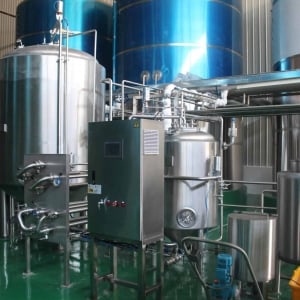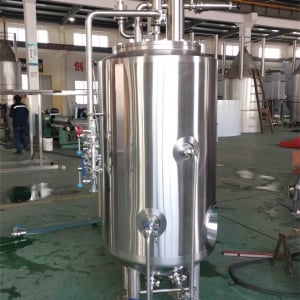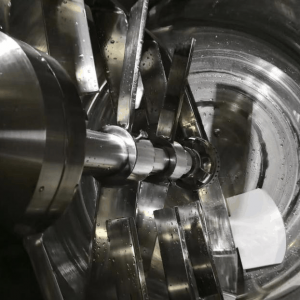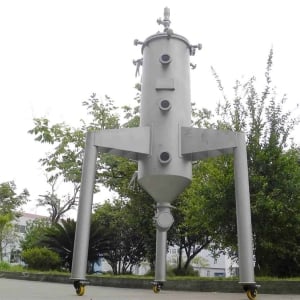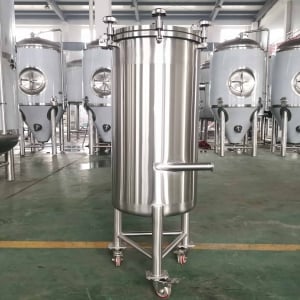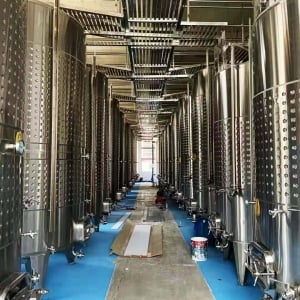Comprehensive Guide to a 10 BBL Brewery
Overview of a 10 BBL Brewery
The 10 BBL brewery system is a popular choice among craft brewers, offering a versatile and efficient brewing capacity that strikes a balance between small-scale, artisanal production and larger, more commercial operations. This system is suitable for brewers looking to produce a significant volume of beer while maintaining the ability to experiment with different recipes and styles. In this guide, we’ll dive deep into everything you need to know about a 10 BBL brewery—from the essential equipment and brewing process to how to choose the right supplier and what to expect in terms of cost and maintenance.
Equipment Guide for a 10 BBL Brewery
When setting up a 10 BBL brewery, the equipment you choose plays a crucial role in determining the quality and efficiency of your brewing process. Each piece of equipment must be carefully selected to ensure it meets the specific needs of your brewery, whether you’re brewing lagers, ales, stouts, or any other type of beer.
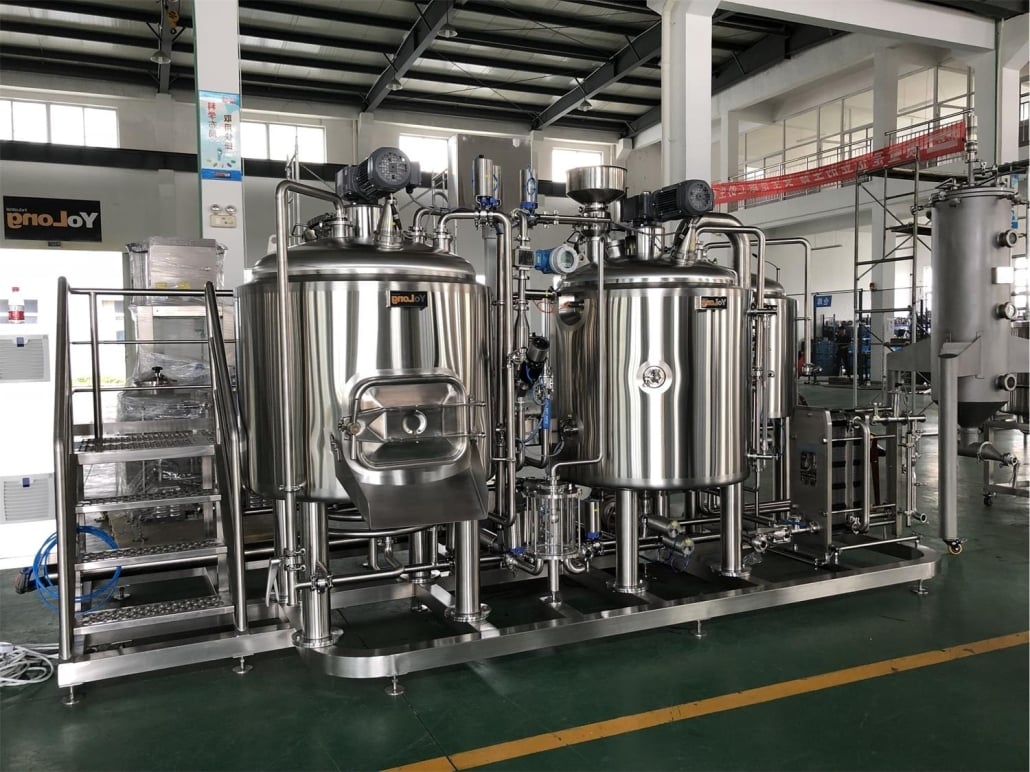
Key Equipment and Their Functions
| Equipment | Description | Key Features |
|---|---|---|
| Mash Tun | A vessel where the mashing process occurs, converting the starches in crushed grains into fermentable sugars. | Insulated with false bottom, rakes, and mixers for even temperature distribution. |
| Lauter Tun | Used for separating the wort from the spent grains after mashing. | Slotted plates for filtering wort, sparging systems for rinsing grains. |
| Brew Kettle | Where the wort is boiled, and hops are added for bitterness, flavor, and aroma. | High-temperature stainless steel construction, whirlpool arm for hop separation. |
| Fermenters | Tanks where yeast is added to the wort for fermentation, turning it into beer. | Temperature-controlled, conical design for yeast collection, multiple sizes available. |
| Brite Tanks | Used for secondary fermentation and carbonation, as well as storing the finished beer before packaging. | Pressurized for carbonation, sight glass for clarity checks, sample valve. |
| Heat Exchanger | Cools the wort quickly after boiling to prepare it for fermentation. | Plate or shell-and-tube designs, high heat transfer efficiency, sanitized connections. |
| Glycol Chiller | Provides precise temperature control for fermenters and brite tanks. | Multiple cooling circuits, energy-efficient compressor, glycol reservoir. |
| Pumps | Used for transferring liquids between different stages of the brewing process. | Food-grade stainless steel, variable speed control, high flow rate. |
| CIP (Clean-In-Place) System | Equipment that ensures the brewing system is kept clean and sanitized without disassembly. | Automated cleaning cycles, chemical dosing pumps, spray balls for thorough cleaning. |
| Control Panel | Centralized system for monitoring and controlling the brewery’s various processes. | Touchscreen interface, programmable logic controllers (PLC), real-time data tracking. |
Each of these components must be chosen based on your specific brewing needs, production goals, and budget. The configuration and quality of these pieces will directly impact your brewery’s efficiency and the consistency of your beer.
The Brewing Process in a 10 BBL Brewery
Brewing beer in a 10 BBL system follows a well-established process, but the specifics can vary depending on the equipment and the type of beer being produced. Below is a detailed description of the standard brewing process in a 10 BBL brewery, from mashing to packaging.
Mashing
Mashing is the first step in the brewing process where the malted grains are mixed with hot water in the mash tun. The heat activates enzymes in the malt that convert the starches into fermentable sugars, which will later be consumed by yeast to produce alcohol. The temperature during mashing is crucial—it’s typically held between 149°F to 158°F (65°C to 70°C) depending on the desired characteristics of the beer.
Lautering
Once mashing is complete, the resulting mixture (known as mash) is transferred to the lauter tun. Here, the liquid wort is separated from the solid grain husks. Sparging, the process of rinsing the grain bed with hot water, ensures that all the fermentable sugars are extracted from the grains. This step is vital for maximizing the efficiency of the mash and ensuring a consistent final product.
Boiling
The wort is then transferred to the brew kettle, where it is boiled for 60 to 90 minutes. During boiling, hops are added at various stages to impart bitterness, flavor, and aroma to the beer. The boiling process also sterilizes the wort, ensuring that any unwanted bacteria or wild yeast are killed off. Boiling is a critical phase where the brewer can control the intensity of flavors in the final beer.
Fermentation
After boiling, the wort must be rapidly cooled to a temperature suitable for fermentation, typically between 68°F to 72°F (20°C to 22°C) for ales and lower for lagers. The cooled wort is transferred to the fermenter, where yeast is added to begin the fermentation process. During fermentation, the yeast consumes the sugars in the wort, producing alcohol, CO2, and various flavor compounds. This process can take anywhere from a few days to several weeks, depending on the style of beer being brewed.
Conditioning
After primary fermentation, the beer is often transferred to brite tanks for conditioning. This phase allows the flavors to mature and any remaining yeast or sediment to settle out. Carbonation is also adjusted during conditioning, either naturally through residual fermentation or by force-carbonating with CO2. The beer may remain in the brite tank for several weeks before it is deemed ready for packaging.
Packaging
The final step in the brewing process is packaging, which can be done in kegs, bottles, or cans. Each packaging method has its own set of equipment and procedures, but all must ensure that the beer is packaged under sanitary conditions to preserve its quality and shelf life.
Design and Layout Considerations for a 10 BBL Brewery
When designing a 10 BBL brewery, several factors must be taken into account, including the available space, desired capacity, and specific brewing goals. The layout of the brewery can significantly impact workflow efficiency, safety, and the overall quality of the beer produced.
Space and Capacity Requirements
| Factor | Details |
|---|---|
| Floor Space | A 10 BBL brewery typically requires at least 1,500 to 2,500 square feet of space to accommodate all equipment, storage, and allow for safe and efficient operation. |
| Ceiling Height | Equipment such as fermenters and brite tanks can be quite tall, so a minimum ceiling height of 14 to 16 feet is recommended. |
| Capacity Planning | The brewing capacity of 10 BBL (approximately 310 gallons or 1,200 liters per batch) should align with your production goals. Consider future expansion when planning space. |
Design and Layout Optimization
| Consideration | Explanation |
|---|---|
| Workflow Efficiency | Equipment should be arranged to minimize unnecessary movement and maximize efficiency. For example, place the mash tun near the hot liquor tank to streamline operations. |
| Sanitation and Safety | The layout should allow easy access for cleaning and maintenance while ensuring that pathways are clear to prevent accidents. |
| Ventilation and Drainage | Proper ventilation is crucial to remove steam and odors. Similarly, adequate drainage systems are needed to handle spills and clean up, preventing mold or mildew. |
| Future Expansion | When designing the layout, consider leaving space for additional fermenters, packaging lines, or storage as your business grows. |
Choosing the Right Supplier for Your 10 BBL Brewery
Selecting the right supplier for your 10 BBL brewery equipment is critical to the success of your operation. A good supplier not only provides high-quality equipment but also offers support throughout the installation, operation, and maintenance phases.
Factors to Consider When Choosing a Supplier
| Criteria | Details |
|---|---|
| Reputation | Look for suppliers with a solid reputation in the industry. Read reviews, check references, and visit breweries that have used their equipment. |
| Customization Options | Ensure that the supplier can customize the equipment to meet your specific brewing needs and space constraints. |
| Technical Support and Training | The supplier should offer comprehensive technical support and training for your staff to ensure smooth operation. |
| Warranty and Maintenance | A strong warranty and accessible maintenance services are crucial for long-term operational reliability. |
| Price Range | While cost is a significant factor, it should not be the only consideration. Balance your budget with the need for quality and support. |
Price Range of 10 BBL Brewery Equipment
| Equipment | Price Range (USD) | Remarks |
| Mash Tun | $10,000 – $25,000 | Price varies based on material quality, insulation, and additional features like rakes and mixers. |
| Lauter Tun | $8,000 – $20,000 | Costs depend on the efficiency of the sparging system and construction materials. |
| Brew Kettle | $15,000 – $30,000 | High-quality kettles with advanced features like whirlpool arms and automated systems can be on the higher end. |
| Fermenters | $7,000 – $18,000 per unit | Price depends on the size, quality of the cooling jacket, and whether they are single or double-walled. |
| Brite Tanks | $6,000 – $15,000 per unit | Similar to fermenters, with costs varying based on size and pressure ratings. |
| Heat Exchanger | $3,000 – $7,000 | Costs are influenced by the efficiency of heat transfer and the materials used in construction. |
| Glycol Chiller | $5,000 – $12,000 | Larger breweries or those in warmer climates may require more robust chillers, increasing costs. |
| Pumps | $1,000 – $5,000 | Varies based on the flow rate, material (stainless steel vs. plastic), and motor power. |
| CIP System | $8,000 – $20,000 | Automated systems with advanced features like chemical dosing and multiple cleaning cycles are more expensive. |
| Control Panel | $10,000 – $25,000 | Price depends on the level of automation, number of monitored variables, and integration with other systems. |
Installation, Operation, and Maintenance of a 10 BBL Brewery
Proper installation, operation, and maintenance are key to ensuring that your 10 BBL brewery runs smoothly and efficiently. In this section, we’ll cover the critical steps in each of these areas.
Installation Considerations
| Factor | Details |
|---|---|
| Site Preparation | Ensure that your site is ready with adequate plumbing, electrical outlets, and ventilation systems. |
| Equipment Setup | Follow the supplier’s guidelines or hire a professional team to set up the equipment. Proper alignment and connection of pipes and tanks are crucial for safe operation. |
| Compliance and Permits | Make sure that all local regulations and safety codes are met, and obtain the necessary permits before installation. |
Operational Guidelines
| Process | Best Practices |
|---|---|
| Start-up Procedures | Always follow the start-up procedures recommended by the equipment manufacturer to avoid damage and ensure optimal performance. |
| Monitoring and Control | Regularly monitor temperatures, pressures, and flow rates. Use the control panel to make real-time adjustments and track data. |
| Sanitation | Maintain strict sanitation protocols to prevent contamination, using the CIP system regularly to clean tanks and lines. |
Maintenance Tips
| Maintenance Task | Frequency | Details |
|---|---|---|
| Visual Inspections | Daily | Check for leaks, corrosion, or other signs of wear on all equipment. |
| Lubrication of Moving Parts | Weekly | Ensure all pumps, valves, and other moving parts are properly lubricated to prevent wear and tear. |
| Calibration of Instruments | Monthly | Regularly calibrate sensors and gauges to ensure accurate readings, particularly those related to temperature and pressure. |
| Full System Clean-up | After each batch | Use the CIP system to thoroughly clean and sanitize all equipment after each brewing cycle. |
How to Choose the Best Supplier for a 10 BBL Brewery
Choosing the best supplier for your 10 BBL brewery is a process that requires careful consideration. Here are some guidelines to help you make an informed decision.
What to Look for in a Supplier
- Experience and Expertise: Look for suppliers with a proven track record in the industry. Suppliers with extensive experience are more likely to offer reliable equipment and valuable advice.
- Customer Support: Evaluate the level of customer support provided by the supplier. Do they offer training, troubleshooting, and ongoing technical support? These factors are crucial for long-term satisfaction.
- Customization Options: Ensure the supplier can tailor their offerings to meet your specific needs, from equipment sizing to control system customization.
- Reputation and Reviews: Check online reviews and ask for references. A supplier with positive feedback from other brewers is more likely to meet your expectations.
Comparing Suppliers: Pros and Cons
| Supplier Criteria | Pros | Cons |
|---|---|---|
| Cost | Lower-cost suppliers can help you stay within budget, but they might compromise on quality or support. | High-quality suppliers often come with a higher price tag, which may strain your budget. |
| Customization | Suppliers that offer customization allow you to tailor the equipment to your exact needs. | Customization can increase lead times and costs. |
| Support | Strong customer support ensures you have help when you need it, reducing downtime. | Suppliers with extensive support might charge higher fees, and availability could vary based on your location. |
| Lead Times | Suppliers with shorter lead times can get your brewery up and running faster. | Faster lead times might come at the expense of thorough testing or customization. |
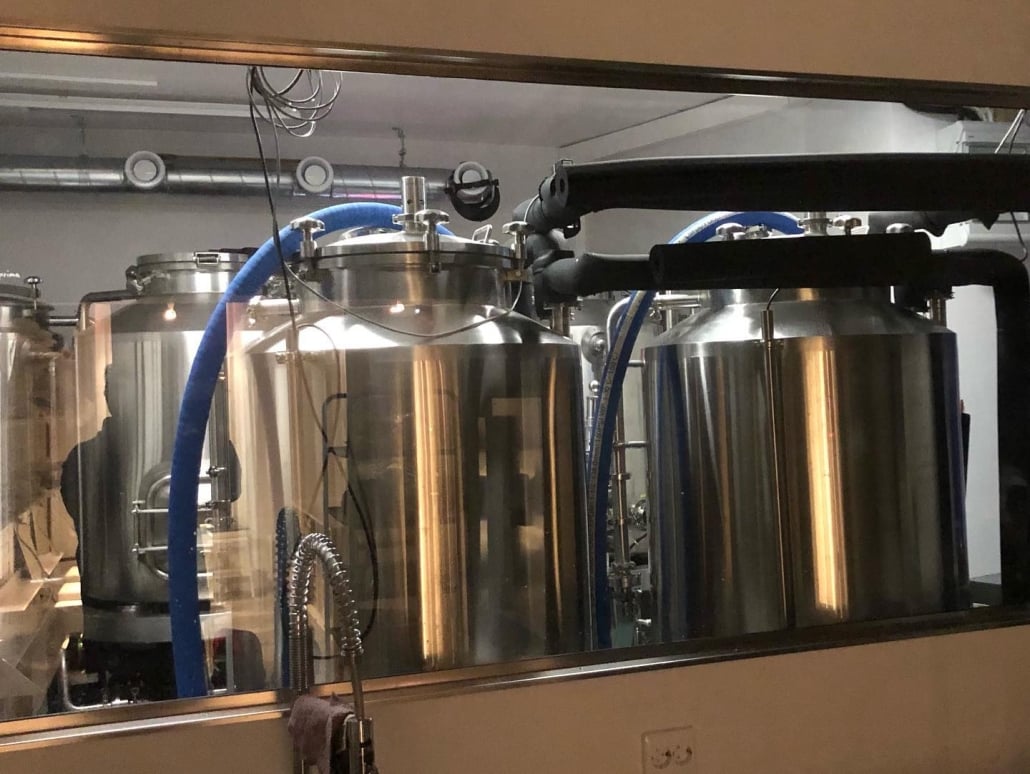
FAQs
How much does it cost to set up a 10 BBL brewery?
| Question | Answer |
|---|---|
| Initial Setup Cost | The cost to set up a 10 BBL brewery can range from $150,000 to $500,000 depending on the quality of the equipment, the level of automation, and the complexity of the installation. |
| Ongoing Operational Costs | Expect to spend additional amounts on raw materials, utilities, maintenance, and labor. Ongoing costs vary widely depending on location, scale, and the efficiency of your operation. |
What are the advantages of a 10 BBL brewery compared to smaller systems?
| Question | Answer |
|---|---|
| Production Capacity | A 10 BBL system offers a higher production capacity, making it suitable for breweries looking to distribute beer on a larger scale. |
| Efficiency | Larger systems are generally more efficient in terms of energy use and labor compared to smaller setups. |
| Versatility | While larger, a 10 BBL system still offers enough flexibility to experiment with different beer styles and recipes without committing to massive production volumes. |
Can I expand my 10 BBL brewery in the future?
| Question | Answer |
|---|---|
| Future Expansion | Yes, many brewers start with a 10 BBL system and expand as their business grows. This can involve adding more fermenters, upgrading equipment, or expanding to a larger facility. |
| Considerations for Expansion | Plan your initial layout with future expansion in mind, leaving space for additional equipment and considering the scalability of your control systems and utilities. |
What should I look for in a used 10 BBL brewery system?
| Question | Answer |
|---|---|
| Condition of Equipment | When buying used, inspect all equipment for signs of wear, corrosion, and proper functionality. Check the history of the system, including any past repairs or modifications. |
| Cost Savings | Used systems can offer significant cost savings but may require more maintenance or upgrades compared to new equipment. |





